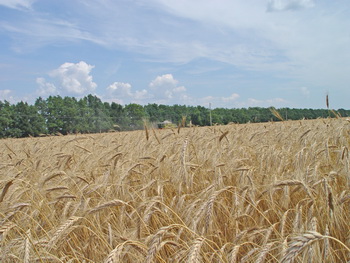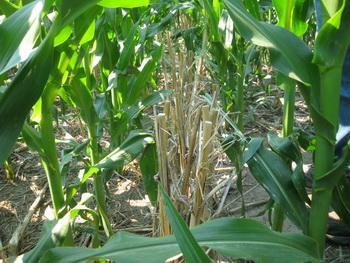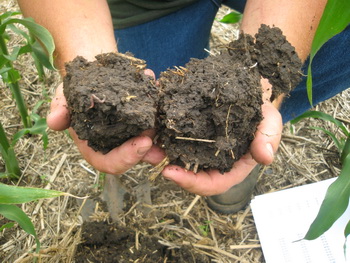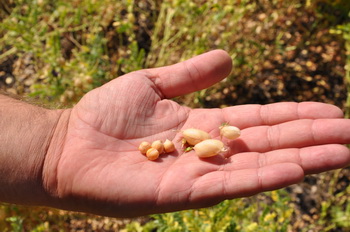Crop production

In 1996, when Agro-Soyuz’s farm was established, it cropped 6708 ha of arable land. As of today, the total area of cropping area amounts to 11300 ha (including 300 ha of educational crop rotation).
Since 1997 Model agricultural enterprise «Agro-Soyuz» has been using resource-saving conservation agriculture. Since 1997 to 2001 minimum tillage was used for crop production and since 2001 the farm transitioned to zero-tillage (No-till).
Continuous use of conservation agriculture principles at «Agro-Soyuz» (located in Ukrainian steppe, which is considered as a risk-farming zone) the average yield of crops has increased and the fertile layer of soil has started to improve.
For example, the yield of winter wheat improved from 1,1 MT/ha in 2003 to 5,9 MT in 2011; soil organic matter content increased from 4,3% to 4,4%.
Fuel consumption reduced from ≈ 100 l/ha to 24 l/ha during the whole year, while the machinery fleet reduced from 40 to 4 machines.
Technology

No-Till is a technology, which excludes mechanical disturbance of soil (direct seeding into stubble and even distribution of crop residues without any preliminary soil tillage.
Special attention under No-till is paid to crop rotations, which allow to reduce weed infestation and disease and pest pressure, while improving soil fertility and potential profitability of land.
Zero-tillage is so popular all over the world due to its environmental and economical advantage, in other words it protects soil from wind and water erosion as well as allows significant reduction of production costs.
Main principles of the technology:
- Minimum soil disturbance;
- Maximum soil cover by live crop canopy and crop residues;
- Stimulation of soil biological activity through crop rotations, cover crops, disease and pests management.

Advantages of the technology:
- Soil fertility is recovered;
- Amount of necessary machines is reduced;
- Fuel consumption is reduced;
- Costs structure is changing towards items that have the biggest effect on yield;
- Labor productivity is increased;
- Profitability is increasing at farms of any size;
- Production costs are reduced
30-50%; - Crop yields are increased and quality indicators are improved.
Technical system
 Agro-Soyuz’s farm uses heavy-duty multi-purpose wide machines.
Agro-Soyuz’s farm uses heavy-duty multi-purpose wide machines.
Machines that are used for 11300 ha:
- 1 seeding complex
- 2 sprayers
- 6 combines
Seeding operation:
1. Core equipment: one seeding complex (1 operator working 20 hours); seeding capacity = 140 ha per 24 hours; fuel consumption = 5 liters per hectare.
2. During this operating shift the following people are working: 1 person responsible for seeds delivery, 1 person responsible for fertilizers delivery, 1 agronomist.
Spraying:
2 people — operators of sprayers, 1 person — process owner, 2 people — delivery of water. Capacity of one sprayer: from 400 to 700 ha/24 hours (depends on application rate).
Harvest:
6 operators in 6 combines + grain cart.
Crop rotation at PrJSC «Agro-Soyuz»
Area, ha |
|
Grains less corn |
4600 |
Corn |
1200 |
Sunflowers |
1980 |
Canola, chick-peas, sorghum for grain |
2200 |
Forage crops |
1360 |
Total: |
11 340 |
Perspectives of crop production development at «Agro-Soyuz»

- Expansion of area under forage sorghum instead of corn.
- Expansion of area of commercial crop rotation due to yield increase of forage crops.
- Introduction of new, profitable crops into crop rotation: sorghum for grain, chick peas, lentils, dry beans.
- Use of cover crops to increase soil organic matter levels.
- Introduction of binary seeding to accumulate nitrogen.
- Harvesting two yields per year on one field (winter barley + ultra-early maturing sunflowers).
